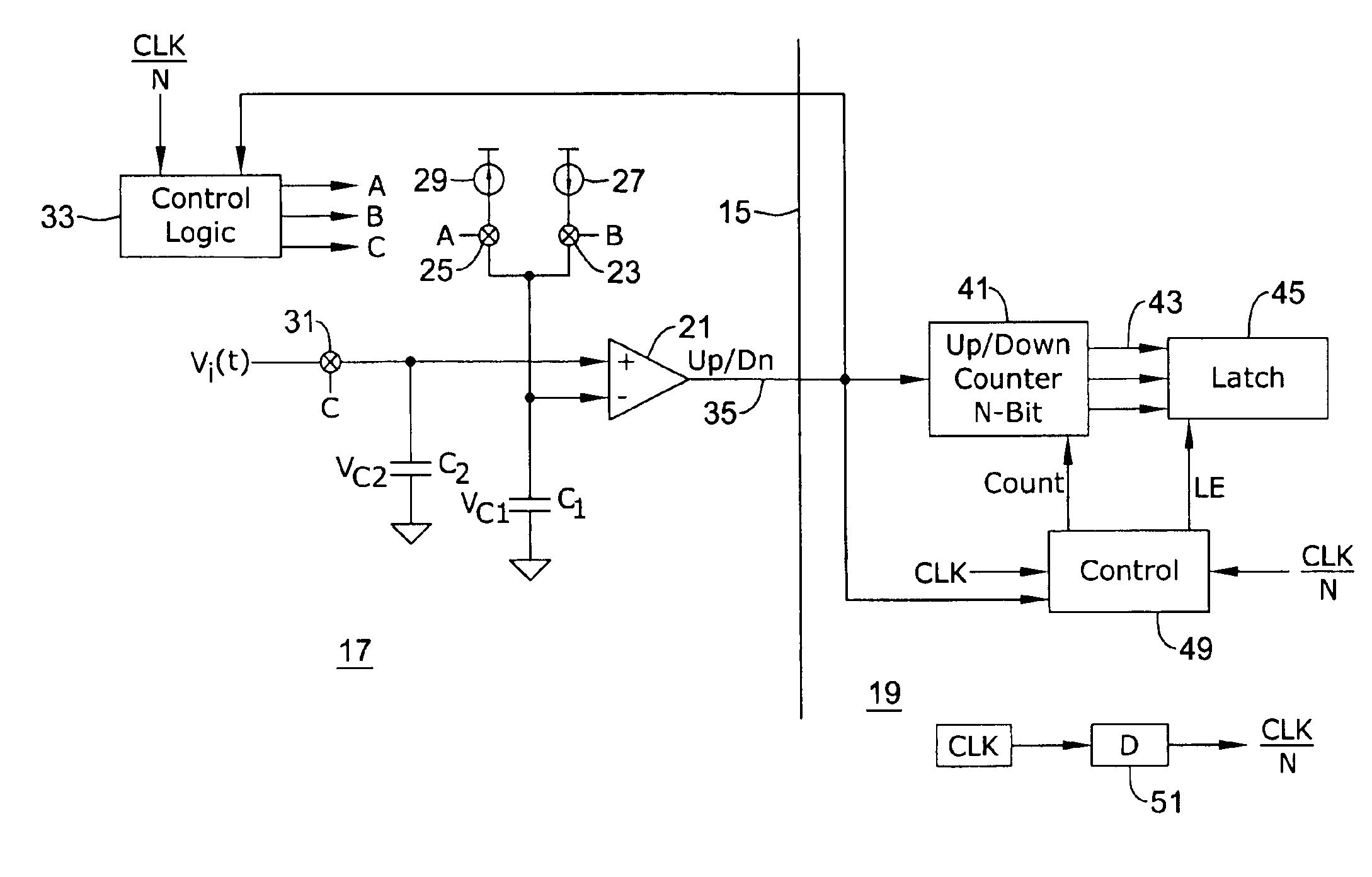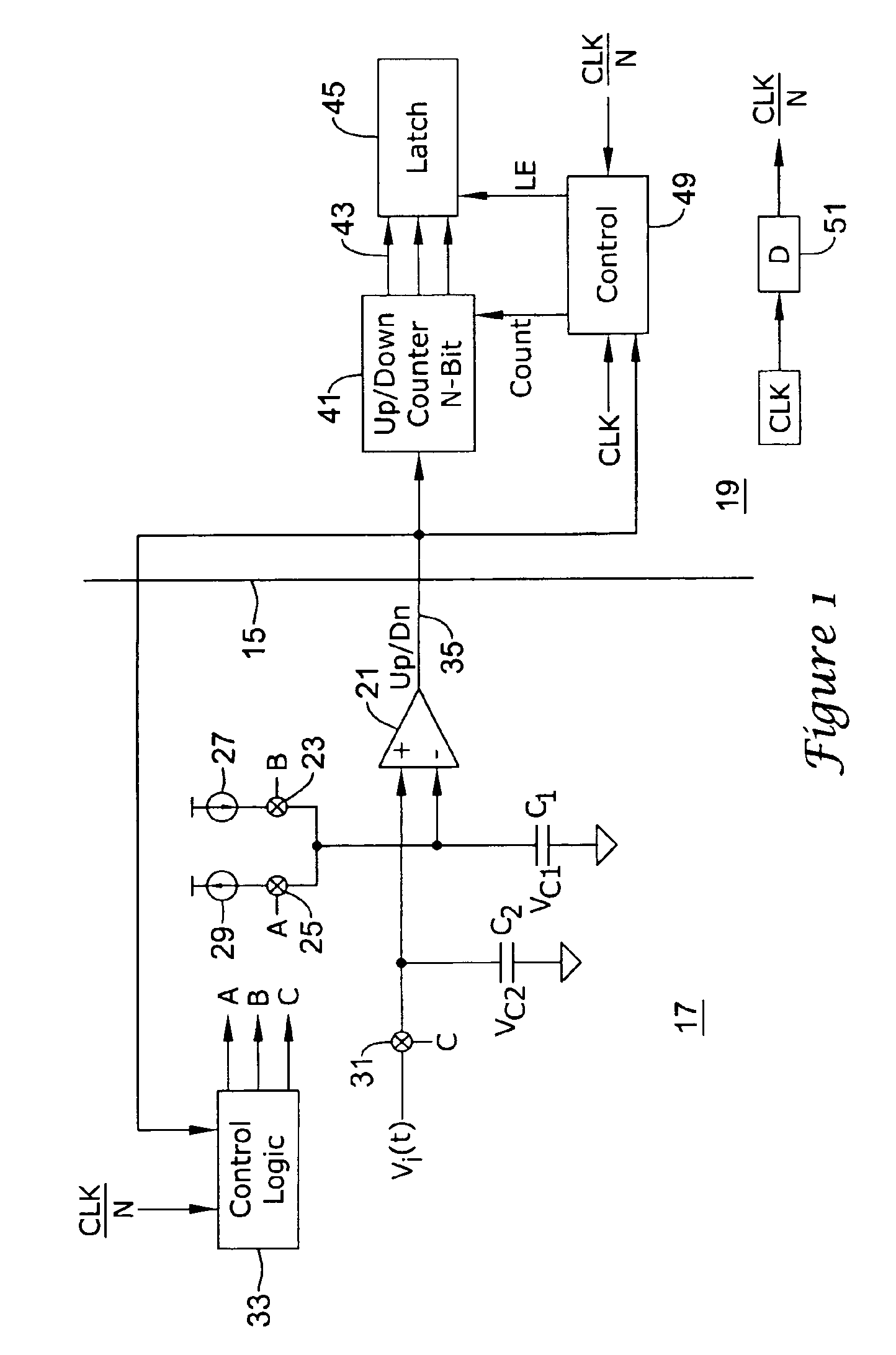Low power A/D converter
a converter and low power technology, applied in the field of electronic circuitry, can solve the problems of no practical use, no system use, and no system us
- Summary
- Abstract
- Description
- Claims
- Application Information
AI Technical Summary
Problems solved by technology
Method used
Image
Examples
Embodiment Construction
[0024]An illustrative embodiment is shown in FIG. 1, wherein the circuit is schematically divided by a line 15 into an analog side 17 and a digital side 19. The analog side 17 of the circuit includes a comparator 21 having an inverting input connected to a first terminal of a first capacitor C1 and a non-inverting input connected to the first terminal of a second capacitor C2. The second terminals of the respective capacitors C1, C2 are grounded.
[0025]The first terminal of the first capacitor C1 is arranged to be connected via operation of respective switches 23, 25 to either a first charging current source 27 or a second discharging current source 29. The switches 23, 25 are controlled by respective control signals B, A.
[0026]The second capacitor C2 is arranged to capture a sample of an analog input voltage Vi (t) which is to be converted to a digital value by the circuit. The sample is provided by momentarily closing a switch 31 in response to application of a third control signal...
PUM
 Login to View More
Login to View More Abstract
Description
Claims
Application Information
 Login to View More
Login to View More - R&D
- Intellectual Property
- Life Sciences
- Materials
- Tech Scout
- Unparalleled Data Quality
- Higher Quality Content
- 60% Fewer Hallucinations
Browse by: Latest US Patents, China's latest patents, Technical Efficacy Thesaurus, Application Domain, Technology Topic, Popular Technical Reports.
© 2025 PatSnap. All rights reserved.Legal|Privacy policy|Modern Slavery Act Transparency Statement|Sitemap|About US| Contact US: help@patsnap.com



